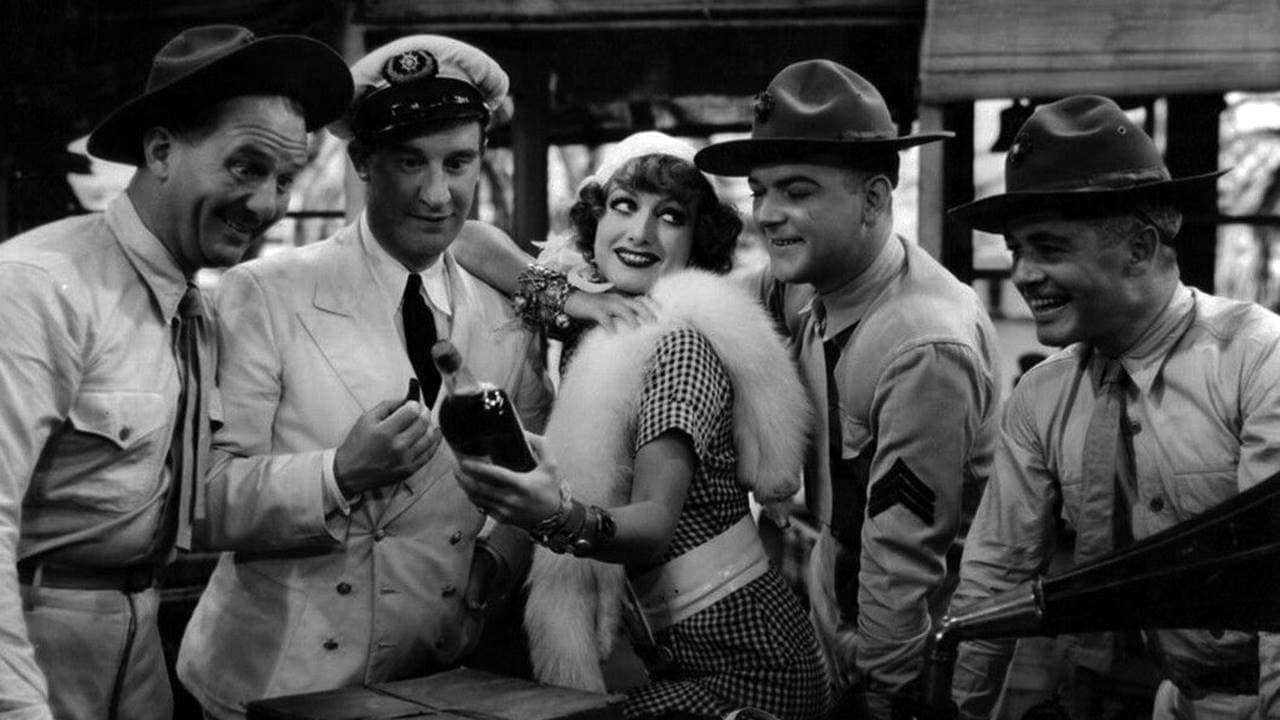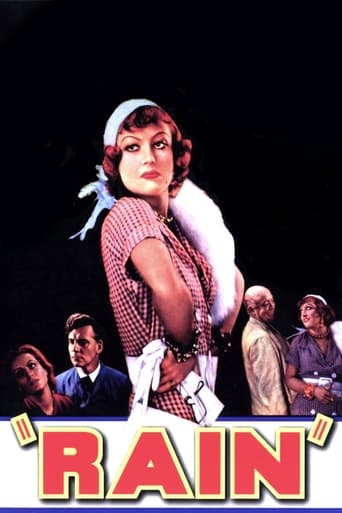

I would like to echo the sentiments of others who are praising the virtues of this 1932 version. It was a rare loan out for Joan Crawford during her MGM years. The production has a few creaky moments, betraying stage origins. But Crawford is really great, and so is the rest of the cast. I love the way director Lewis Milestone includes those poetic shots of the landscape. This is easily in my top five favorite pre-code films. It's one of those pictures that I go back to often that seems to bring even deeper pleasure. The main thing the later Rita Hayworth version has over this one is Technicolor, but color is not necessary to tell this story.
... View MoreJoan Crawford Hated this one, most Likely because it Bombed at the Box Office and got some Bad Reviews. But it Speaks for Itself. Predictably Talky, but not without some Effective and sometimes Impressive Visuals. From a Painted Up and Garishly Decorated Tainted "Lady of the Night" (Sexy Sadie) to some Fluid Camera-Work for the Time, and an Atmosphere Drenched in God's Nectar, the Movie is a Pre-Code Sermon on Religious Hypocrisy with a Plea for a "Live and Let Live" Society. Walter Huston gives an Acerbic Stiff Performance. But at Their Worst, these Types of Bible-Thumpers are Acerbic, although some can be Charming and Suave. There's an Added Treat of the Inn Keeper Reciting Friedrich Nietzsche (the "God is Dead" Philosopher).Overall, it is Definitely Worth a Watch for Joan Crawford's Iconic Entrance and overall Look and Her sometimes Effective and sometimes Not so Effective Performance, the Direction of Lewis Milestone, and the Pre-Code Freedom to Take On the Subject of Religion that would become a Blasphemous NO NO in the Post Code Years.Reformers were Successful in Bringing about Prohibition and were also Highly Influential in Establishing the Motion Picture Production Code.Right Wing Religious Evangelicals were as Powerful in the Twenties and Thirties as They are Today and Have and Had a Heavy Hand in Directing Political Figures. The Breen Office and Hays Code would Silence the Artistic Opposition on Screen for Decades.
... View MoreI'm not much of a Joan Crawford fan, but she was great in this early talkie version of "Rain." Not as assured as Gloria Swanson in the 1928 version, but pretty close! She sells the character's swagger and crudeness while keeping her sympathetic and likable.The direction is great. Joan's entrance is creatively staged and shot.Walter Huston was a fantastic actor, though he does not manage to be as creepy as Lionel Barrymore had been in the silent version. Everyone else is mostly forgettable.This is not the best version of Rain, but it is still worth a watch and it's miles ahead of that awful and garish Rita Hayworth version in the 1950s.
... View MoreEven for the 1930's this film was way over the top. Not even remotely close to reality. Heck the audiences didn't like it when it came out. Why? It wasn't believable.I think most will give this a favorable rating because of Joan Crawford. For me, this was her "bottom of the barrel" role. The premise in this film is so stupid it defies realities of that time.Basic premise is, a boat gets stranded on an island and a few sets of people get off to stay in a local hotel. 1 set is a bunch of holy rollers who think they can impose their will on anyone because they think they have the right. The other is a prostitute who likes to have fun, but, the holy rollers want none of it so the head preacher decides he wants her off the island. He heads to the Governors place to threaten him with his influence from Washington. So the Governor has told her she has to leave and all through out the head preacher baits her on and ruffles his feathers like he's the king of the island. She doesn't want to go back to San Fransisco like he wants because she'll be jailed for an unspecified crime.....but the dear ole preacher just says "you must atone". During all this you'll be grinding your teeth hoping this guy get what he deserves. Sadie now has decided she will go back...and has found religion.Turns out though the old preacher just didn't have the religion that ingrained in him. All the while they wait for the boat, the local tribe keep pounding out this drum beat and rhythm that the preacher succumbs to and he decides to take a turn at her. Next morning he turns up dead...suicide. He'd rather be dead than let everyone know he took a run at a prostitute.For me the acting performances are not what I had an issue with. It was the ridiculous material they had to work with...i.e...the story. Let me ask you. What religious nut from any time in America has had the influence to make a girl leave a place in which she's done nothing wrong? It's ridiculous. She's obviously a prostitute but all she did at the hotel was play music and dance. Where does this guy get the gaol to think he can control anyone's life? It's like the people around her just sit and stare and do nothing to help. They know he's a fanatic and that she's harmless but they do nothing. They could have took her away to hide her so she could leave whenever she wanted but nope. They sit back and do...nothing.As I've mentioned, the preacher gets what he deserves in the end but it left me wanting to take a shower after watching this. This film was not a winner. Sure it's dated but even for any day and time....it's ridiculous.
... View More